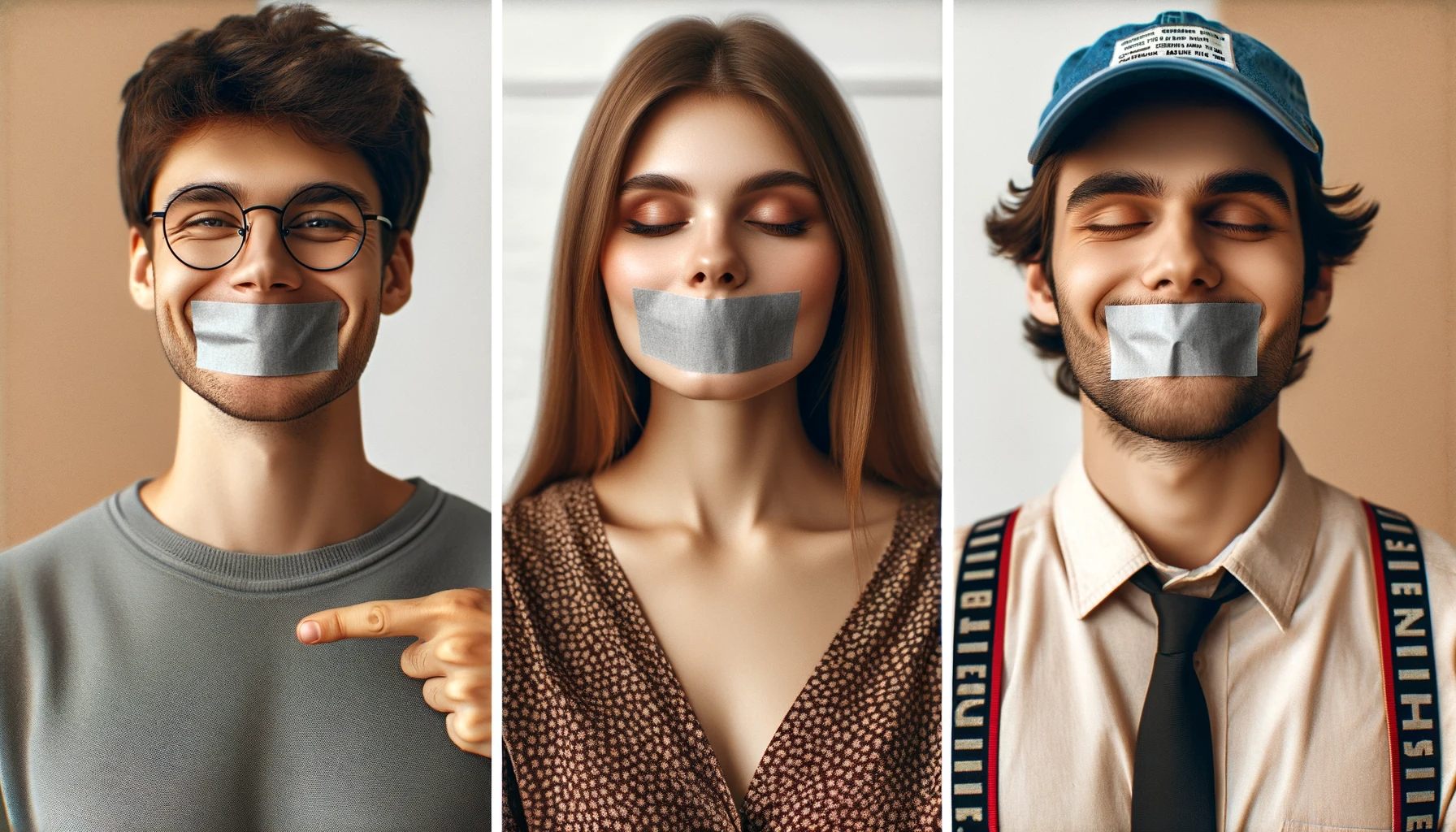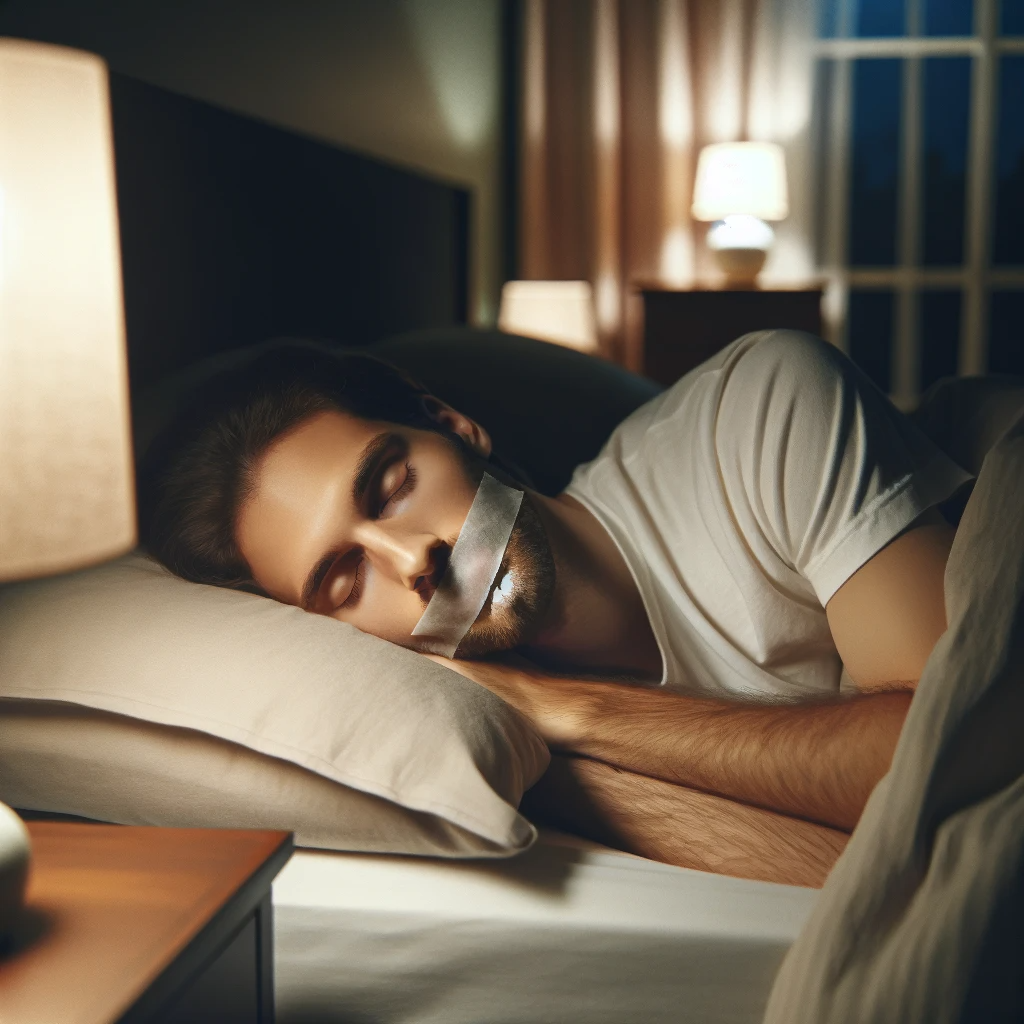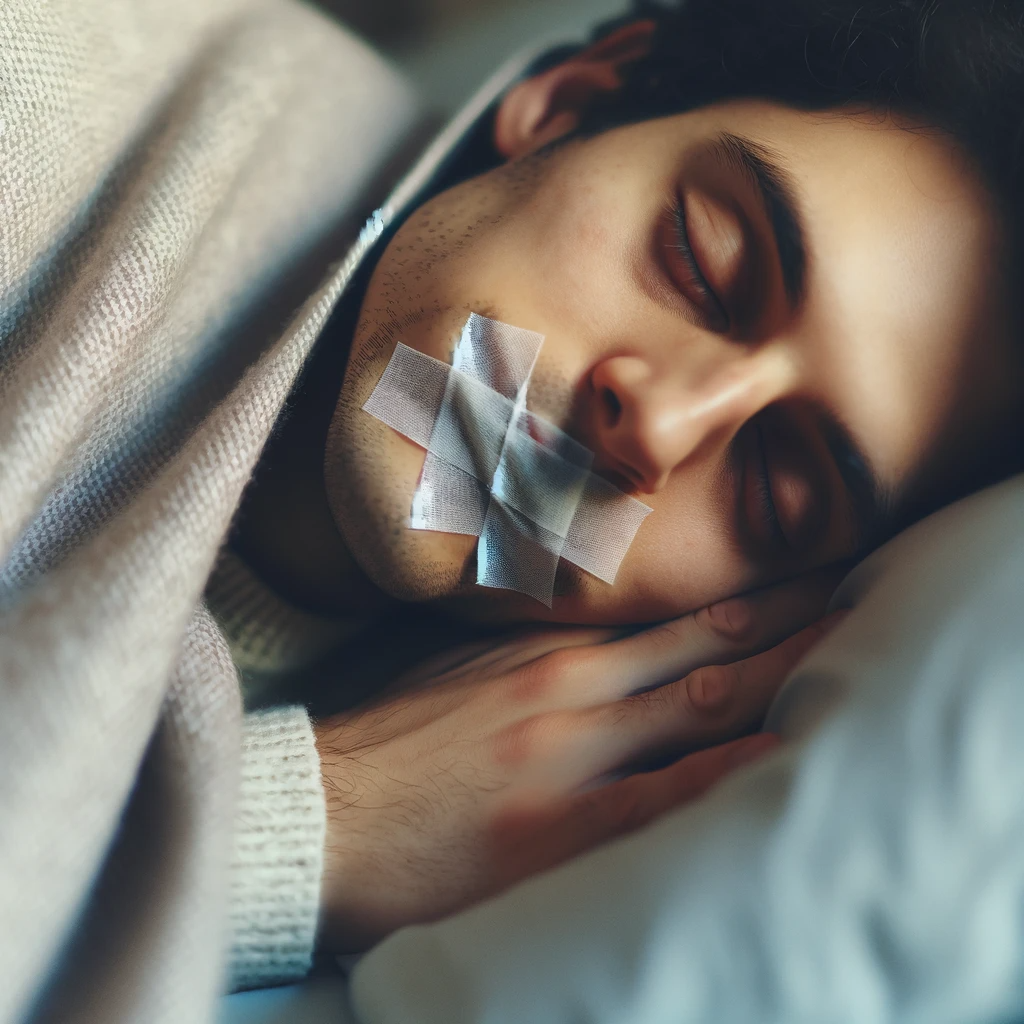Mouth taping, a practice that involves securing the mouth shut before bed, has recently emerged as a popular wellness trend. This method, primarily aimed at promoting nasal breathing during sleep, is increasingly backed by scientific research and anecdotal evidence for its array of health benefits. From enhancing sleep quality to potentially aiding in respiratory conditions, mouth taping is more than just a passing fad. In this blog, we explore the multifaceted benefits of mouth taping, supported by scientific evidence and real-life experiences.
In today's fast-paced world, where new health trends emerge almost daily, it's easy to overlook fad practices. One such practice, which has recently gained traction, thanks to users like Andrew Huberman and Ali Abdaal, is mouth taping. Yes, you read that right – taping your mouth shut before bed. As bizarre as it might sound, this method, aimed at promoting nasal breathing during sleep, has a surprisingly profound impact on overall well-being.
About 16 months ago, I decided to take a leap into this unconventional practice. Like many, I was initially skeptical. Could a small piece of tape really make a difference in my sleep and health? But as I learned more about the science behind it and heard anecdotal success stories, my curiosity got the better of me. This blog post is a journey through my personal experience with mouth taping, coupled with scientific evidence that supports its various health benefits. From enhancing sleep quality to potentially aiding in respiratory conditions, I've discovered firsthand that mouth taping is more than just a passing fad.

Personal Experience
When I first heard about mouth taping, I was skeptical. The idea of taping my mouth shut every night seemed unusual, to say the least. However, driven by a blend of curiosity, and a desire to reduce my mouth breathing, I decided to give it a try. The initial nights were an adjustment, especially because I have a beard, and boy does it hurt sometimes, but soon, it became a part of my nightly routine.
It may sound like I was the one who decided to make it part of my nightly routine, but in actuality it was my wife. At this point, she reminds me to tape my mouth before bed. Things we do for love.
The first change I noticed was in the quality of my breath. Mornings, once marked by a dry mouth and stale breath, is significantly better. My tonsils are typically never inflamed anymore and I oddly don't get sick as often anymore either - however this could just be coincidental. This was just the beginning.
Another surprising benefit was the physical change in my facial appearance. The puffiness and bloated look I often woke up with started to decrease, giving way to better-defined jaws. But perhaps the most notable change was reported by my wife – my snoring, which had been a nightly disturbance, ceased entirely.
I noticed a considerable reduction in my tendency to breathe through my mouth during the day. This switch to nasal breathing seemed to offer an improvement to my respiratory health.

The Science behind Mouth Taping
While my personal experience with mouth taping has been overwhelmingly positive, it's important to understand the scientific underpinnings of this practice. Various studies have shed light on the potential health benefits of mouth taping, particularly in areas like asthma control, sleep bruxism, sleep architecture, and mild obstructive sleep apnea. However I wanted to explore if it is necessary for day to day users.
Asthma Control and Mouth Taping: A study by Cooper et al. (2009) focused on the impact of mouth taping on asthma control. Although no significant differences were observed in asthma control compared to usual breathing methods, the high acceptability among participants suggested other benefits. Many, including myself, have experienced a subjective improvement in breathing and a reduction in nocturnal asthma symptoms, likely due to enhanced air filtration and humidification from nasal breathing.
Relief in Sleep Bruxism: Mouth taping might also offer relief for those suffering from sleep bruxism. According to Keskinruzgar et al. (2019), techniques akin to mouth taping, such as Kinesio taping, effectively reduced muscle pain associated with bruxism. This aligns with my experience, where I noticed a decrease in jaw tension and morning discomfort, pointing to its benefits in managing bruxism symptoms.
Enhancing Sleep Architecture: Teschler et al. (1999) found that mouth taping in patients using nasal bilevel ventilation improved sleep quality, indicated by reduced arousal and increased REM sleep. My experience echoes these findings. I've observed a deeper, more restorative sleep and not waking up as often during the night.
Mouth Taping in Mild Obstructive Sleep Apnea: The impact of mouth taping on mild obstructive sleep apnea is particularly notable. Lee et al. (2022) showed a significant reduction in the apnea/hypopnea index and snoring index among patients. This mirrors my wife's observations of reduced snoring.
Mouth Taping Detailed Benefits
Since starting mouth taping, I've noticed several specific improvements:
Better Breath and Improved Sleep Quality: The most noticeable change was in my morning breath, which became significantly fresher. My sleep quality also improved. I started experiencing deeper, more restful sleep, waking up feeling refreshed.
Reduction in Facial Swelling and Improved Jaw Definition: Another unexpected benefit was the physical change in my facial appearance. The usual morning puffiness reduced, and my jaws began to show better definition.
Decrease in Brain Fog and Grogginess: The mental clarity I gained was substantial. The brain fog and grogginess that used to linger in the mornings began to dissipate, improving my productivity and mood throughout the day.
Elimination of Snoring and Drooling: My wife noticed that my snoring had stopped, a change that positively impacted both of our sleep qualities. Additionally, I used to drool quite a bit in my sleep, which has now completely ceased. This reduction in drooling not only makes for a cleaner sleep experience but also suggests an improvement in overall sleep hygiene.
Reduced Tonsil Irritation: Previously, I often woke up with irritated tonsils. Since I started mouth taping, this issue has disappeared. It appears that the switch to nasal breathing has had a positive effect on my throat health, reducing the irritation that used to be a regular part of my mornings.
Reduced Mouth Breathing: During the day, I find myself naturally breathing through my nose more often, leading to a decrease in mouth breathing. This shift has contributed to an overall improvement in my respiratory health and general well-being.

Mouth Taping Misconceptions
When I first mentioned mouth taping to friends and family, their reactions ranged from disbelief to curiosity. It's a reaction I understand well, having had similar reservations initially.
It's natural to worry about taping one’s mouth shut at night. However, the tape used is typically gentle and designed for this specific purpose. It's not like using regular adhesive tape. It allows for easy removal and is safe for use on the skin.
Another common misconception is that mouth taping might lead to suffocation. The reality is that, for most people, nasal breathing is more than sufficient to maintain proper oxygen levels during sleep. However, it’s crucial for individuals with respiratory issues or those who are unsure about their nasal potency to consult a healthcare professional before trying this - I am not a doctor, I am an engineer, so listen to them, not me. I just want to share my experience.
Finally, there's skepticism about the effectiveness of Mouth Taping. While it might seem too straightforward to be impactful, the subtle shift from mouth to nasal breathing can have a notable effect on sleep quality and overall health.
Guidance for Beginners
For those interested in trying mouth taping, here's a bit of advice based on my experience:
- Start with the right tape. Look for one specifically designed for mouth taping. I prefer the waterproof tapes.
- Ease into it. Begin with pressing your lips together and taping only in the middle of your lips. Once you become more comfortable you can try to tape the whole mouth, but it may never be necessary.
- Listen to your body. If it feels uncomfortable or you're struggling to breathe comfortably, remove the tape.
- Consult a healthcare professional if you have any concerns, especially if you have existing health issues. Remember, that I am just a random person on the internet, and what works for me, won't necessarily work for you.
Tape Recommendation: Look for Waterproof Medical Tape that is at least 1.5" - 2" inches wide. These can be found in most pharmacies. This is the one I use that can be found at Shopper Drug Mart in Canada.

Conclusion
My experience with mouth taping has been surprisingly positive. It's a simple practice that has brought significant improvements to my sleep quality and overall well-being. While the scientific evidence provides a compelling backing, it's important to approach this practice with caution and seek professional advice if necessary. For those curious about trying mouth taping, it could be a worthwhile experiment in the quest for better sleep and health.
